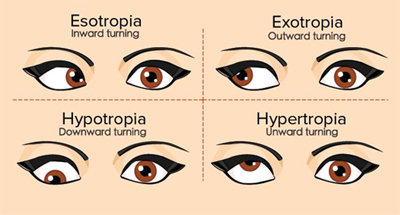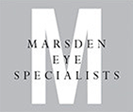Strabismus (squint) is a condition in which the two eyes are not pointing in the same direction (misalignment). This often occurs due to lack of muscle co-ordination causing the eyes to point in different directions. Other causes include poor vision and mechanical problems in the eye. In adults, strabismus may be a symptom of various brain disorders or systemic diseases such as stroke, thyroid eye disease, diabetes and head trauma.
Types of Strabismus:

Treatment
Strabismus could be treated with glasses, eye muscle exercises, prism glasses, botulinum toxin (Botox) injections and eye muscle surgery. A full assessment is to decide which the best treatment option for your squint is.
- Glasses
Certain types of strabismus can be corrected by wearing glasses or changing their prescription. This treatment option is often used in childhood strabismus. - Eye muscle Exercises
Eye muscle exercises can be useful in individuals who have weak convergence (convergence insufficiency). This occurs when the eyes have difficulty focusing inward during reading and near work. The exercises may strengthen your eye muscles so that they may focus inward together. - Prisms
Prism glasses can be used to correct double vision, especially when the strabismus size is relatively small. Temporary prisms (Fresnels) can be used especially if the squint is variable as the strength of the prisms can be adjusted easily. - EMG-Guided Botox injection
EMG-Guided Botox injection is an effective treatment in certain types of adult squint such as in patients who have had multiple strabismus surgeries in the past.
Click here to read about strabismus surgery


 n
n